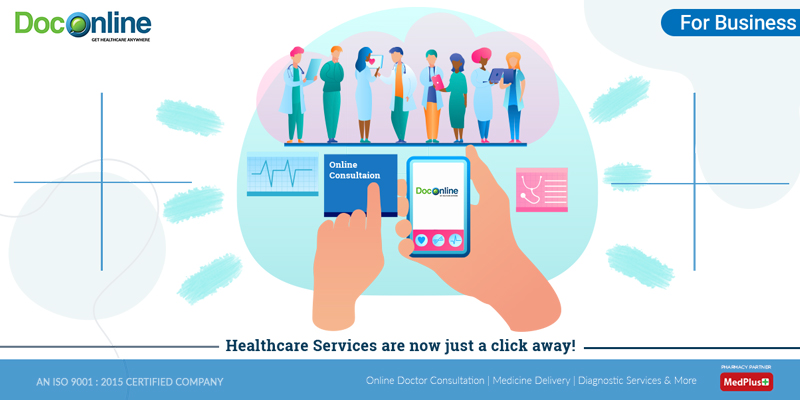Why Subscription Based Healthcare is Acquiring Popularity Among Patients Today
Why Subscription Based Healthcare is Acquiring Popularity Among Patients Today
Blog Article
Just How Subscription-Based Healthcare Is Changing the Medical Sector

The Increase of Registration Medical Care
Over the last few years, the health care sector has seen a considerable change in the direction of subscription-based models, mirroring more comprehensive customer fads preferring convenience and predictability. This transformation is driven by the enhancing need for even more accessible and tailored treatment services. Registration health care, occasionally referred to as concierge medicine or straight medical care, uses people a set regular monthly fee for a variety of clinical solutions, substantially altering conventional fee-for-service designs.
The surge of registration medical care is promoted by improvements in technology, which enable streamlined interaction in between companies and people - subscription based healthcare. Digital systems and telehealth solutions have actually come to be important, using clients the capability to arrange visits, gain access to medical documents, and receive appointments online. This technical assimilation not only enhances patient engagement yet additionally enables suppliers to deliver more reliable care
Additionally, the membership design straightens with the progressing assumptions of individuals that seek even more control over their health care costs and experiences. By getting rid of the changability of co-pays and insurance policy cases, subscription-based medical care offers a clear and straightforward method. While this design is acquiring grip, its expansion faces obstacles such as governing obstacles and the requirement for more comprehensive approval within the traditional healthcare community. Nonetheless, its growing presence notes a turning point in the advancement of health care shipment.
Advantages for Providers and people
Subscription-based health care provides a plethora of advantages for both clients and providers, reshaping the dynamics of medical care. For clients, this design supplies enhanced access to healthcare services. With a foreseeable monthly cost, people can enjoy limitless assessments, decreased delay times, and customized treatment. This plan typically leads to a much more aggressive method to health management, enabling for timely interventions that can prevent persistent problems from rising. The economic openness of subscription designs minimizes the unpredictability connected with typical fee-for-service payment, reducing the concern of unforeseen clinical expenses.
For healthcare companies, subscription-based designs foster a more lasting and rewarding practice. By securing a steady income stream, carriers can concentrate on delivering high-grade care without the pressure of volume-based service. This model urges longer person assessments, cultivating stronger patient-provider connections and improving health results. Furthermore, it provides suppliers the versatility to introduce and include holistic and preventive treatment techniques. Administrative tasks are usually structured, lowering overhead expenses and permitting suppliers to commit more time to individual interaction. Generally, subscription-based medical care aligns the motivations of people and carriers, advertising a much more effective and patient-centered medical care delivery system.
Key Attributes of the Model
Regularly, the key attributes of the subscription-based healthcare design highlight its distinct method to providing medical solutions. Central to this model is the principle of predictable, month-to-month repayments, offering people a detailed variety of solutions go to this site without the changability of conventional fee-for-service structures. This version often consists of unrestricted access to health care solutions, preventative care, and routine examinations, ensuring that clients can engage with their doctor proactively instead than reactively.
Additionally, direct communication channels, such as telemedicine and messaging systems, are highlighted, permitting patients to obtain timely guidance and assessments without requiring in-person consultations. This enhances ease of access and ease, especially for people with flexibility restraints or those residing in remote areas. The design additionally cultivates more powerful doctor-patient connections, as doctor are incentivized to concentrate on lasting wellness outcomes as opposed to temporary check outs.
In addition, subscription-based medical care usually integrates technological developments, such as electronic health and wellness records and health and wellness monitoring apps, to offer reliable and tailored treatment. Clients gain from collaborated and continual care monitoring, which is tailored to their particular health and wellness demands. Inevitably, these features jointly produce a patient-centered healthcare experience, focusing on accessibility, expense openness, and precautionary care.

Factors To Consider and obstacles
While the subscription-based health care version supplies numerous advantages, it is not without its challenges and factors to consider. One significant difficulty is ensuring equitable access. Subscription models might accidentally favor those with greater socioeconomic standing, potentially widening variations in healthcare access for lower-income individuals that may have problem with month-to-month fees. This elevates moral issues regarding inclusivity and equity in medical care delivery.
Another difficulty lies click to read in governing conformity. Subscription-based medical care must browse a complex internet of guidelines that vary by region, consisting of problems around patient discretion, information security, and state licensing demands. Making certain conformity without hampering the model's adaptability and technology can be discouraging for carriers.
In addition, there is the risk of overutilization or underutilization of services. People paying a taken care of fee could overuse services, bring about enhanced operational expenses, while others might underutilize as a result of fear of straining the system, possibly neglecting essential treatment.
Future Prospects and Innovations
The landscape of subscription-based medical care is positioned for change via arising advancements and developing leads. As innovation proceeds to development, the integration of artificial knowledge and maker discovering offers substantial chances to enhance diagnostic accuracy and simplify individual management. Anticipating analytics can reinvent precautionary care by identifying possible health and wellness dangers prior to they manifest, therefore lowering both costs and the worry on health care systems.
Moreover, telemedicine is set to broaden within registration versions, offering people raised accessibility to medical care experts despite geographical restraints. This not just assists in continuity of care but likewise equips patients to involve even more actively in their wellness administration. In addition, blockchain innovation provides possible in safeguarding patient information and making certain interoperability throughout platforms, fostering trust fund and openness.
Partnerships between technology companies and healthcare providers are likely to produce cutting-edge options, enhancing person experiences and end results. As these leads materialize, subscription-based health care has the link possible to redefine how care is provided and accessed.
Final Thought
Subscription-based healthcare is transforming the clinical market by offering an extra easily accessible, foreseeable, and patient-centered strategy to clinical services. Despite obstacles such as regulatory difficulties and possible variations in accessibility, the subscription design holds assurance for a much more tailored and efficient healthcare experience.
Membership medical care, in some cases referred to as attendant medication or direct primary care, provides individuals a fixed month-to-month cost for an array of clinical services, significantly modifying traditional fee-for-service versions.
Furthermore, the registration version straightens with the developing assumptions of clients that seek more control over their healthcare costs and experiences. For patients, this model offers improved access to healthcare services. Generally, subscription-based health care lines up the rewards of companies and clients, promoting a much more patient-centered and effective health care shipment system.
In addition, telemedicine is set to broaden within membership models, offering patients enhanced access to health care experts regardless of geographical constraints. - subscription based healthcare
Report this page